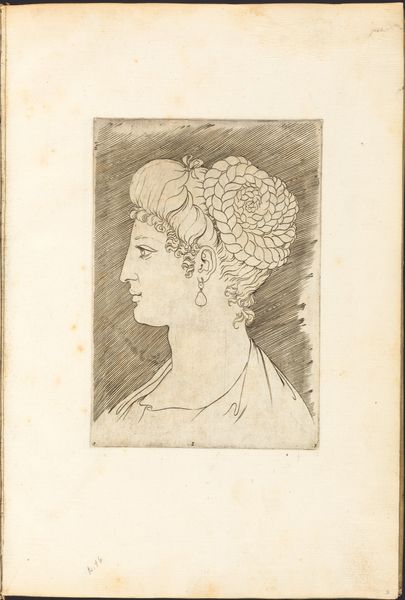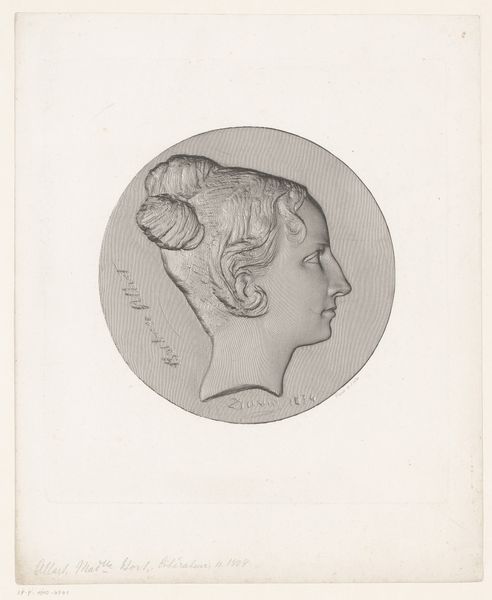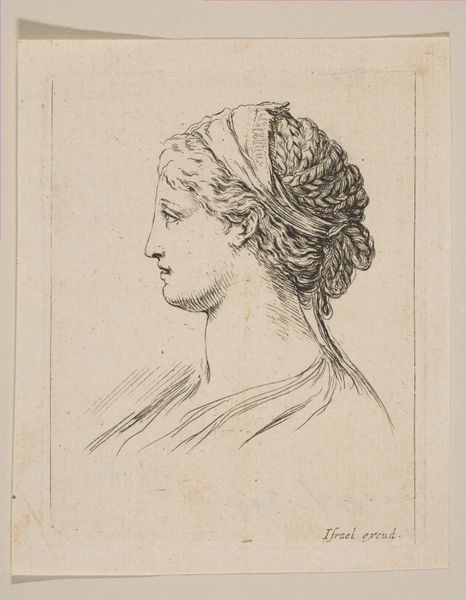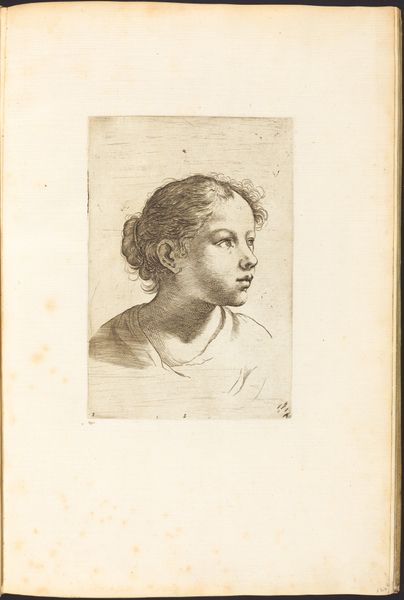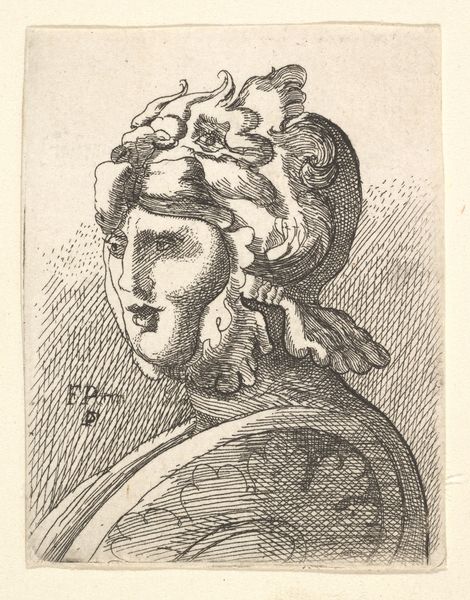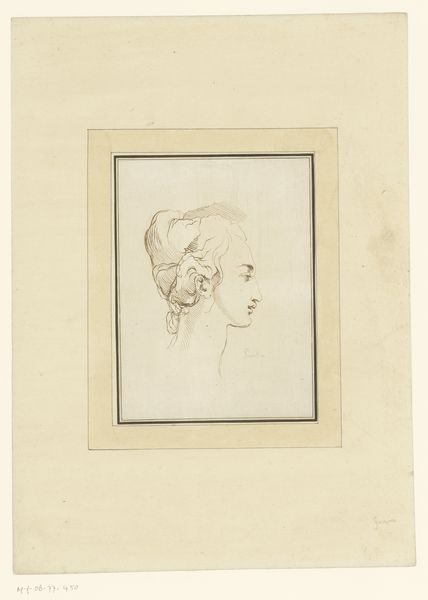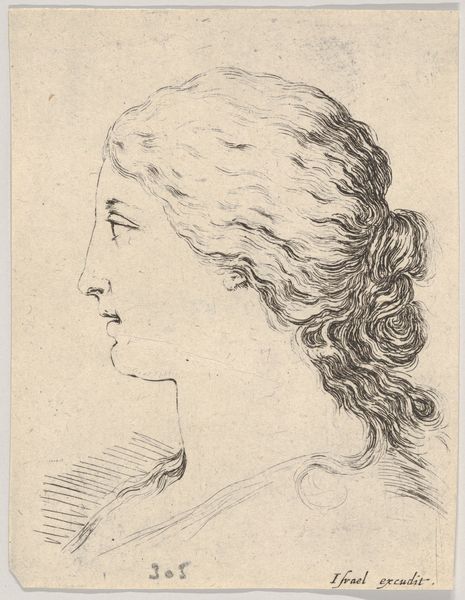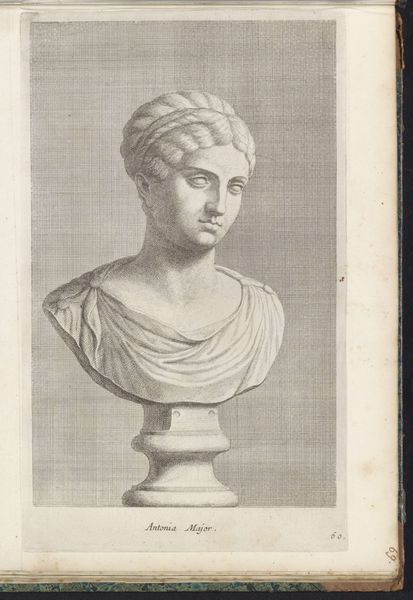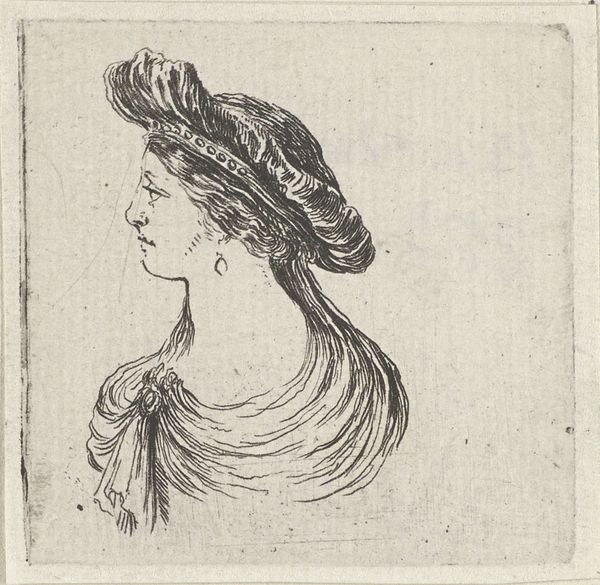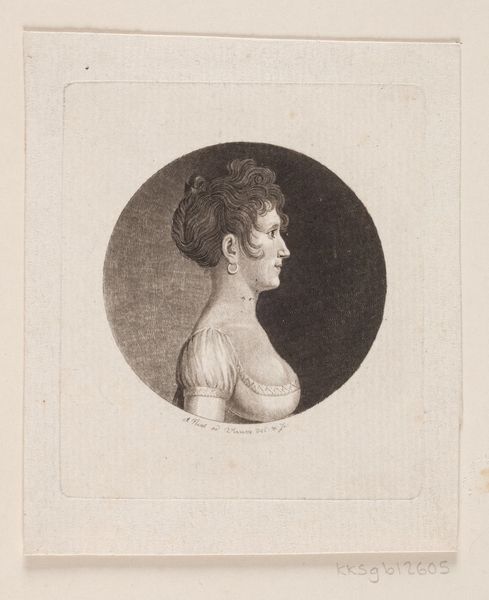
drawing, print, ink, engraving
#
portrait
#
drawing
# print
#
ink
#
ancient-mediterranean
#
italian-renaissance
#
engraving
Copyright: National Gallery of Art: CC0 1.0
Curator: Looking at this print from a drawing book, dating back to around 1610 to 1620 and attributed to Luca Ciamberlano, I immediately notice its crisp lines despite the image's age, a delicate interplay between ink and paper. What is your impression? Editor: I’m struck by the classical restraint. This profile, seemingly Roman in style, echoes patriarchal power. Note the controlled gaze and stylized hair—almost architectural in its rigid spiral. There is little vulnerability offered; the subject seems idealized and elevated. Curator: Indeed. Consider the material process here: engraving demands precise control and immense labor. This wasn’t mass-produced. It was likely for an elite clientele or possibly other artists seeking models for their own work. Think of the labor required for each individual line and the social hierarchies underpinning that system. Editor: And it also speaks to cultural appropriation! This Roman revival coincided with intensified colonialism. While ostensibly celebrating classical beauty, it erases the diverse voices that existed even then, amplifying a very specific, power-laden aesthetic narrative. This is the elite gazing back at itself and consolidating its narrative of historical greatness. Curator: Yes, and let's consider the book aspect of this print. The function of a drawing book at this time wasn't purely aesthetic; it was practical, serving as a manual and a resource. These prints were circulated and consumed to enable the wider production of art, playing an essential role in workshop practices. Editor: Exactly! It highlights a standardized, arguably hegemonic idea of beauty and virtue that spreads throughout the culture. But looking through a contemporary lens, it begs critical questions. Who does this ideal exclude? What alternate aesthetic traditions were being actively suppressed at the same time? Curator: Seeing this artwork now reminds me to look carefully at the role materials play in shaping art historical narratives. By understanding the processes involved, we expose the economic and social structures that helped construct our current artistic and cultural landscapes. Editor: I find myself grappling with how easily the concept of 'classical beauty' can perpetuate harmful hierarchies. Analyzing how that standard came to be—and who benefits from its legacy—that feels like the only responsible way forward.
Comments
No comments
Be the first to comment and join the conversation on the ultimate creative platform.
